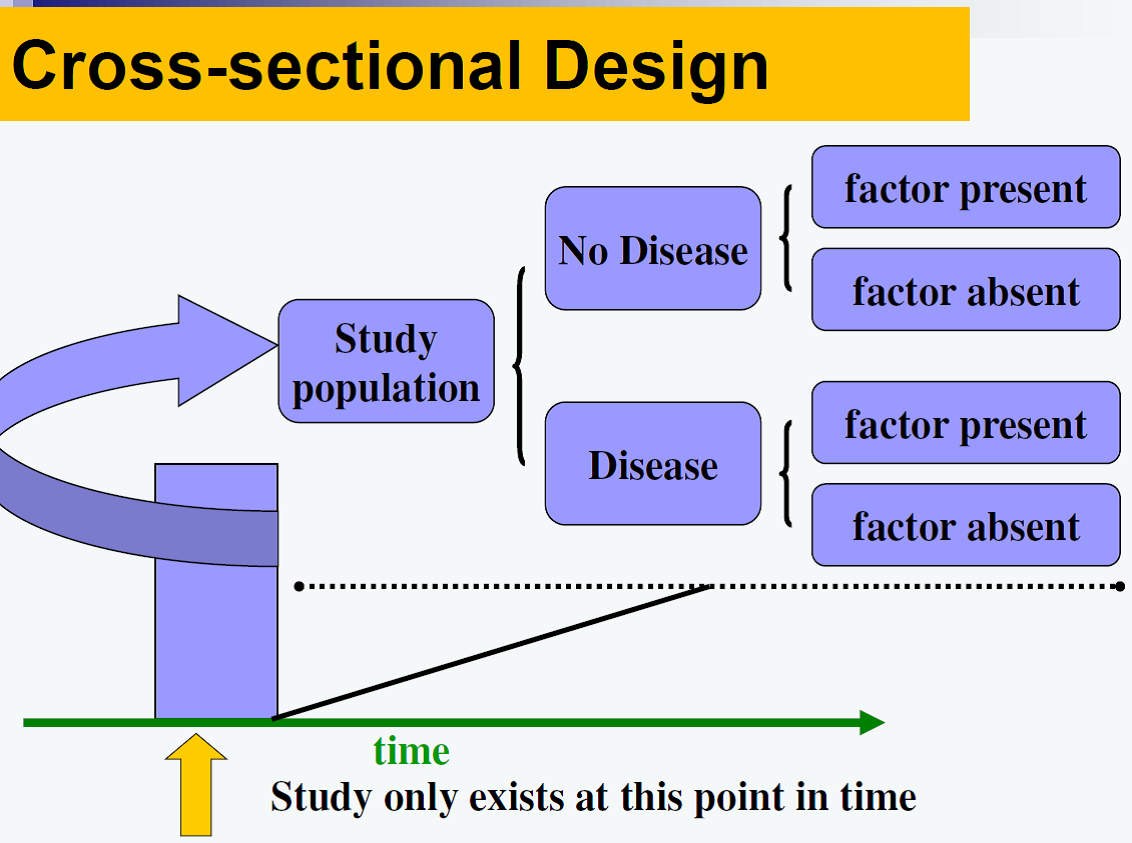Observational Study Designs: Cross-sectional study
The main purpose of these studies are usually descriptive, but sometimes are carried out to investigate associations between exposures and outcomes. Cross-sectional studies provide a snapshot of the status of the population at one point in time. With this type of study only the prevalence of conditions can be ascertained (i.e. no incidence can be determined), hence they are also called ‘prevalence studies.’ Because both the exposure and outcome are determined the same time, no temporality between these two variables can be inferred; therefore no inferences about causality can be made from this type of study design.
A survey is classical example of a cross-sectional study.
Figure 1. Cross-sectional Design
Figure from: Niyonsenga, T. Foundations of Public Health Epidemiology (HLTH 5188). School of Population Health. University of South Australia.
Advantages
- Cheap to conduct
- Not time consuming
- Many outcomes and exposures can be assessed
- Useful for hypothesis generation
- Informative in public health planning (captures disease prevalence)
Disadvantages
- Cannot make casual inferences
- Snapshot of one time point
- Neyman bias- selection bias caused by selective survival in the prevalent cases. Certain exposures with high incidence of death (and quick) will not be captured. Certain exposures that only lead to mild symptoms, and not death, will be over-represented.
